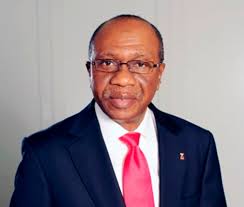L
LequteMan
Guest
The Institute of Economic Affairs, IEA, has an article that compares the impact of Mobile Money on Kenya, the largest economy in East Africa, with its impact on Nigeria, the largest economy in West Africa (and Africa as a whole).
Excerpt:
Kenya has been successful due to Mobile Money being ‘telecom-led’. The telecommunication company Safaricom entered the Mobile Money market in Kenya back in 2007 with a platform called M-PESA. Safaricom invested in the infrastructure, trained their agents all over the country to become Mobile Money agents and simultaneously promoted awareness.
Safaricom have been successful due to the high penetration of mobile phones throughout Kenya as well as a large unbanked population. There was also little regulation at the time, which helped facilitate market innovation. Subsequently, other telecommunication companies have entered the market, but they still have a small market share in comparison to Safaricom.
Nigeria also has a large unbanked population and high levels of telecommunications penetration. However the Mobile Money experience here has not yet been so successful.
According to the EFInA Access to Financial Services in Nigeria 2014 Survey, there were 0.8m adults in Nigeria using Mobile Money. This compares to a population of around 178m people, demonstrating far less penetration compared to the Kenyan market.
The main blame for the slow take up of Mobile Money falls on the Nigerian Central Bank (CBN). The CBN has followed a ‘bank-led’ model where they have licenced banks to operate Mobile Money rather than the telecommunication companies. The reason for the bank-led model in Nigeria has been partly for protectionist reasons, to avoid money laundering and also due to concerns about a loss of control. The CBN has also more heavily legislated the Mobile Money industry making the Nigerian regulatory environment less attractive.
Read full story
Excerpt:
Kenya has been successful due to Mobile Money being ‘telecom-led’. The telecommunication company Safaricom entered the Mobile Money market in Kenya back in 2007 with a platform called M-PESA. Safaricom invested in the infrastructure, trained their agents all over the country to become Mobile Money agents and simultaneously promoted awareness.
Safaricom have been successful due to the high penetration of mobile phones throughout Kenya as well as a large unbanked population. There was also little regulation at the time, which helped facilitate market innovation. Subsequently, other telecommunication companies have entered the market, but they still have a small market share in comparison to Safaricom.
Nigeria also has a large unbanked population and high levels of telecommunications penetration. However the Mobile Money experience here has not yet been so successful.
According to the EFInA Access to Financial Services in Nigeria 2014 Survey, there were 0.8m adults in Nigeria using Mobile Money. This compares to a population of around 178m people, demonstrating far less penetration compared to the Kenyan market.
The main blame for the slow take up of Mobile Money falls on the Nigerian Central Bank (CBN). The CBN has followed a ‘bank-led’ model where they have licenced banks to operate Mobile Money rather than the telecommunication companies. The reason for the bank-led model in Nigeria has been partly for protectionist reasons, to avoid money laundering and also due to concerns about a loss of control. The CBN has also more heavily legislated the Mobile Money industry making the Nigerian regulatory environment less attractive.
Read full story


